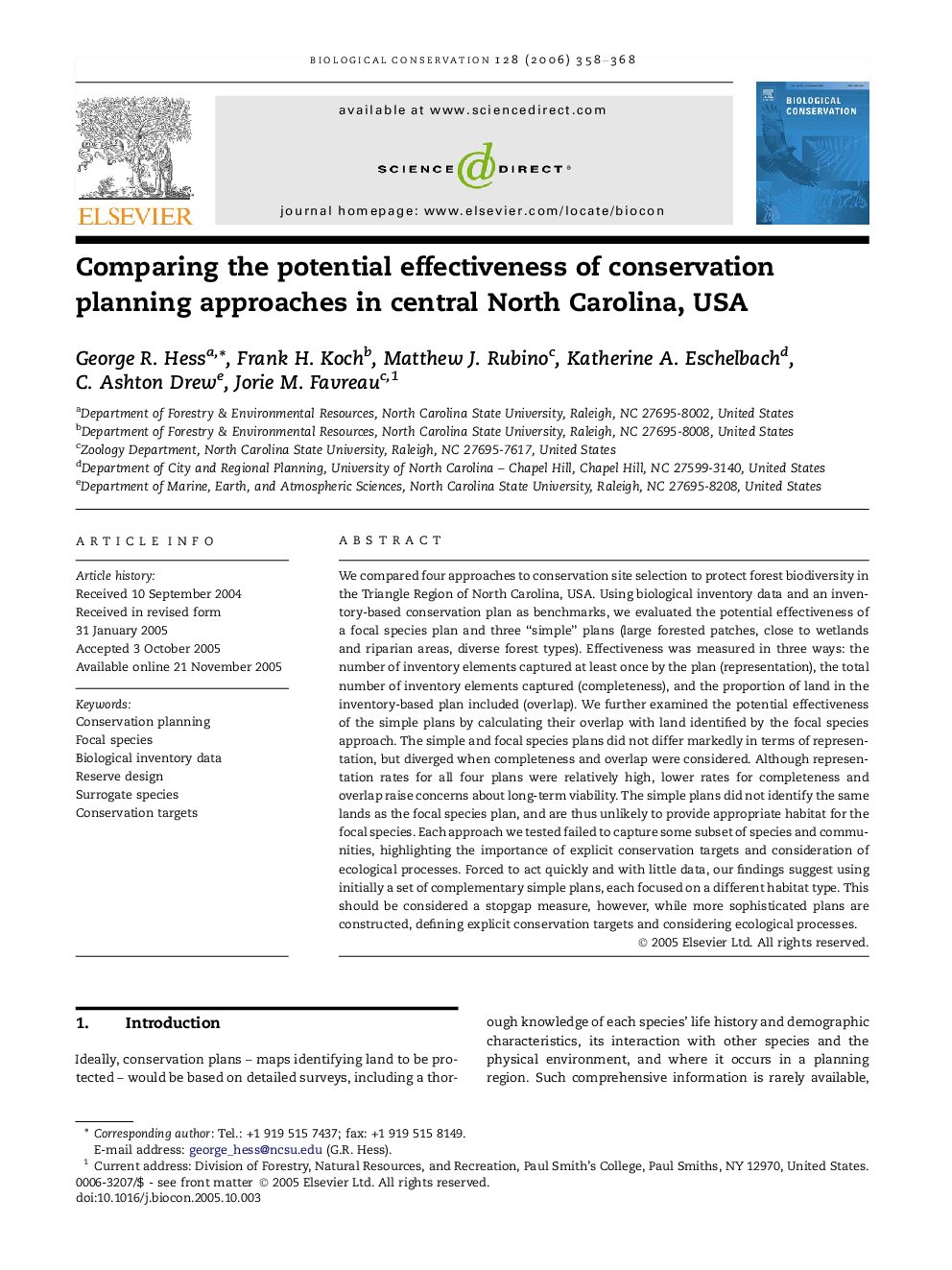| Article ID | Journal | Published Year | Pages | File Type |
|---|---|---|---|---|
| 4387857 | Biological Conservation | 2006 | 11 Pages |
We compared four approaches to conservation site selection to protect forest biodiversity in the Triangle Region of North Carolina, USA. Using biological inventory data and an inventory-based conservation plan as benchmarks, we evaluated the potential effectiveness of a focal species plan and three “simple” plans (large forested patches, close to wetlands and riparian areas, diverse forest types). Effectiveness was measured in three ways: the number of inventory elements captured at least once by the plan (representation), the total number of inventory elements captured (completeness), and the proportion of land in the inventory-based plan included (overlap). We further examined the potential effectiveness of the simple plans by calculating their overlap with land identified by the focal species approach. The simple and focal species plans did not differ markedly in terms of representation, but diverged when completeness and overlap were considered. Although representation rates for all four plans were relatively high, lower rates for completeness and overlap raise concerns about long-term viability. The simple plans did not identify the same lands as the focal species plan, and are thus unlikely to provide appropriate habitat for the focal species. Each approach we tested failed to capture some subset of species and communities, highlighting the importance of explicit conservation targets and consideration of ecological processes. Forced to act quickly and with little data, our findings suggest using initially a set of complementary simple plans, each focused on a different habitat type. This should be considered a stopgap measure, however, while more sophisticated plans are constructed, defining explicit conservation targets and considering ecological processes.
